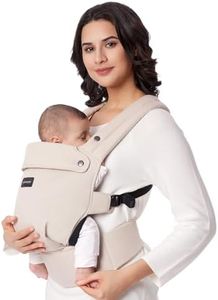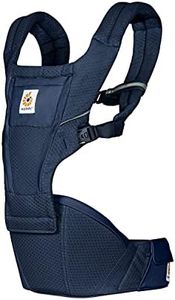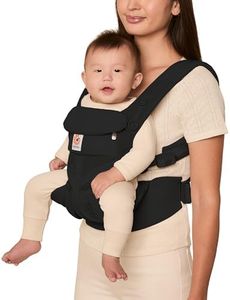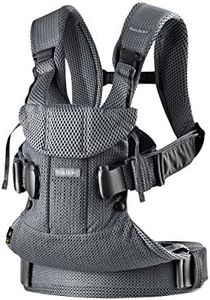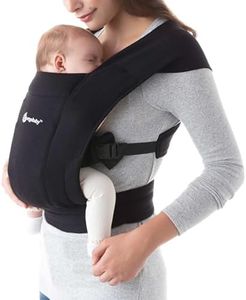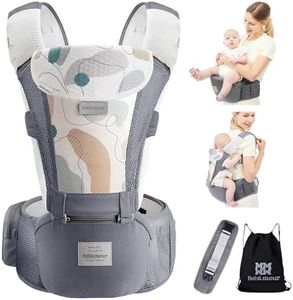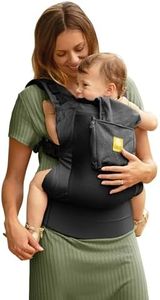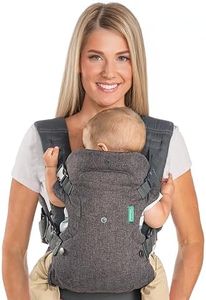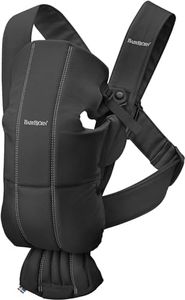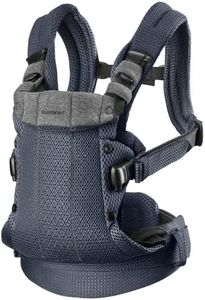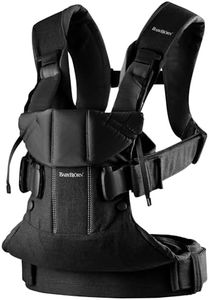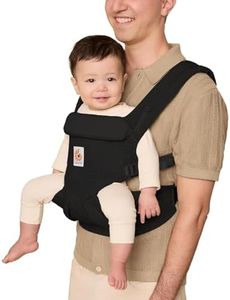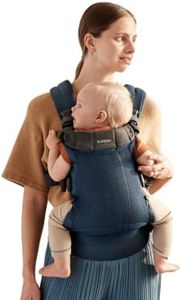We Use CookiesWe use cookies to enhance the security, performance,
functionality and for analytical and promotional activities. By continuing to browse this site you
are agreeing to our privacy policy
10 Best Baby Carriers
From leading brands and best sellers available on the web.Buying Guide for the Best Baby Carriers
Choosing a baby carrier can greatly affect your comfort and your baby's well-being during the months or even years you’ll use it. It's important to consider both your needs and your baby's stage of development. A good baby carrier should offer safety, comfort, and practicality while fitting your lifestyle and daily activities. As you compare options, try to imagine situations in which you'll be using the carrier, such as walks, errands, or travel, and think about which features will matter most to you in those moments.Carrier TypeThe type of baby carrier refers to its basic design, and this can have a big impact on both comfort and usability. There are several main types: wrap carriers, soft structured carriers, and backpack carriers. Wraps are long pieces of fabric you tie yourself, which offer versatility and closeness, making them good for newborns, but they might take some practice to use. Soft structured carriers have straps and buckles, making them quick to put on and adjust, and they usually have padding for comfort, making them suitable for longer outings and a growing baby. Backpack carriers are more rigid and designed for older babies or toddlers, especially when hiking or walking long distances. Thinking about how old your baby is and where you plan to use the carrier helps guide your choice.
Weight and Age RangeThe weight and age range shows which baby sizes and ages the carrier is built to support safely. This is critical for your baby's security and comfort. Some carriers are made specifically for newborns and very small infants, while others are designed to adjust and grow with your child, supporting toddlers as well. If you want a carrier to use from birth, look for one with newborn support, and if you hope to use it into toddlerhood, check the upper weight or age limit. Always match the carrier's range to your child’s current age and expected growth.
Carrying PositionsCarrying positions describe the different ways you can wear your baby, such as facing inward, facing outward, on your hip, or on your back. Some carriers offer only one or two positions, while others provide several. If you want to keep your baby close and snuggled, an inward-facing position is ideal and often required for younger infants. As your baby grows and becomes curious about the world, you might want the option for outward-facing or back carrying. If flexibility is important, choose a carrier that supports multiple positions.
Ergonomic SupportErgonomic support means the carrier is designed to keep your baby’s hips, legs, and spine in healthy and safe positions, while also distributing the weight evenly for the adult. Proper ergonomic support helps prevent hip problems in babies and reduces strain on your back and shoulders. Look for carriers that mention hip-healthy positions or have padding and structured seats for the baby, as well as wide, padded shoulder straps and waist belts for you. If you have any back or shoulder issues, prioritize ergonomics more highly.
AdjustabilityAdjustability refers to how well the carrier can be customized to fit different body sizes and shapes for both baby and adult. Features include adjustable straps, seat widths, panel heights, and even extendable headrests for growing babies. Greater adjustability is helpful if more than one person will use the carrier or if you want it to last through different stages of your baby's growth. Make sure adjustments can be made easily and securely, and that the carrier can provide a snug fit for both small and large wearers.
Material and BreathabilityThe material used in a baby carrier affects both comfort and practicality. Soft, breathable fabrics like cotton help keep both you and your baby cool, which is especially important in warm climates or for active use. Some carriers use mesh panels for extra airflow. If you'll use the carrier outdoors or for long walks, pick a breathable fabric. Also, check if the material is easy to clean, as babies are prone to messes and spills.
Ease of UseEase of use describes how quickly and simply you can put the carrier on, adjust it, and take it off, even by yourself. Some carriers, like wraps, can take time to get the hang of, while structured carriers with buckles are generally faster and simpler, especially if you’re managing the baby alone. If you often need to get going quickly, or if you feel less confident with complicated straps, opt for a design known for its straightforward use.
